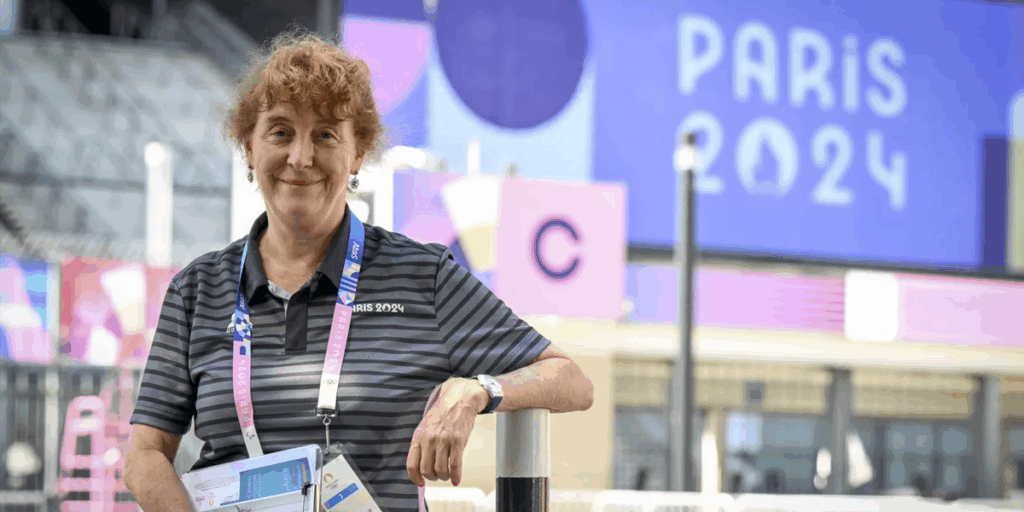
When the stadium roars and medals are decided by the blink of an eye, one Australian sits quietly in a soundproof room, cursor poised, responsibility immense.
Janet Nixon is widely regarded as the world’s leading photo finish judge and the final authority on some of athletics’ most defining moments.
For Nixon, the job is about more than technology. It’s about trust, precision, and delivering what she calls “a good product for the athletes.”
“I really enjoy doing the best job I can and making sure the service we provide is fair and accurate,” Nixon says. “Every time I go out to the track, that’s my focus — to get it right.”
Photo finish is a technical discipline, naturally drawing those with a background in science and technology. With her STEM training, Nixon was uniquely placed to master the art. Yet she also broke new ground, becoming the first woman to be appointed as an international photo finish judge.
“It didn’t occur to me at the time,” she admits. “It was just who I was. To me, being female was as irrelevant as having red hair. But others told me it mattered. Looking back, I can see how important visibility is. You can’t be what you can’t see.”
Today, Nixon is one of many women who have risen to the top ranks of officiating, though she still acknowledges that the field is traditionally male-dominated.
“There are no barriers anymore. If you enjoy this type of work, the opportunities are there. It’s about turning up and doing your best.”
From Beijing to Paris, Nixon has judged some of the sport’s most dramatic moments — including dead heats in Olympic and World Championship sprints. The stakes are enormous, but her approach is clinical.
“My job is to stay calm and do what we all know how to do. Athletes become numbers and uniforms — I don’t think about who they are until the decision is made. It has to be impersonal,” she explains.
Yet even in the sterility of the photo finish room, the emotion of the sport sometimes sneaks through. Nixon remembers Nicola Olyslagers’ leap in Tokyo:
“It was between track races, and I just made this involuntary noise — wow. It caught me off guard. But when it comes to the finish line, I’m all focus.”
Nixon is quick to credit the community around her for her success. “I’ve always felt supported, domestically and internationally. People like Brian Roe have been critical in encouraging women to develop and take opportunities. I wouldn’t be here without others believing in me.”
It’s a philosophy she pays forward.
“When I see young women coming through, I make a point to support them. They should see that others have done it before, that they’re not alone. If you enjoy it, you’ll get so much more out of officiating than you put in.”
While technology has revolutionised athletics, the fundamentals of photo finish remain the same: clarity, judgement, accuracy. Nixon has seen it all evolve — from camera resolution to live data on scoreboards.
“The challenge now is not the lack of data, but too much of it,” she says. “We have to choose what’s interesting and useful, without taking away the excitement of the sport.”
As the world’s best athletes prepare to meet in Tokyo, Nixon will again be there, quiet, unseen, yet central to the drama. Her rulings can shape history, yet she insists her path has never been about ambition.
“I never set out to reach the heights I’ve achieved. They just happened because I really enjoy what I do,” she reflects.
“Whether it’s a Saturday club meet or the Olympic Games, I treat it the same way and that’s with fairness, accuracy, and respect for the athletes.”
By Sascha Ryner, Australian Athletics
Photo with thanks to The Age and Eddie Jim

